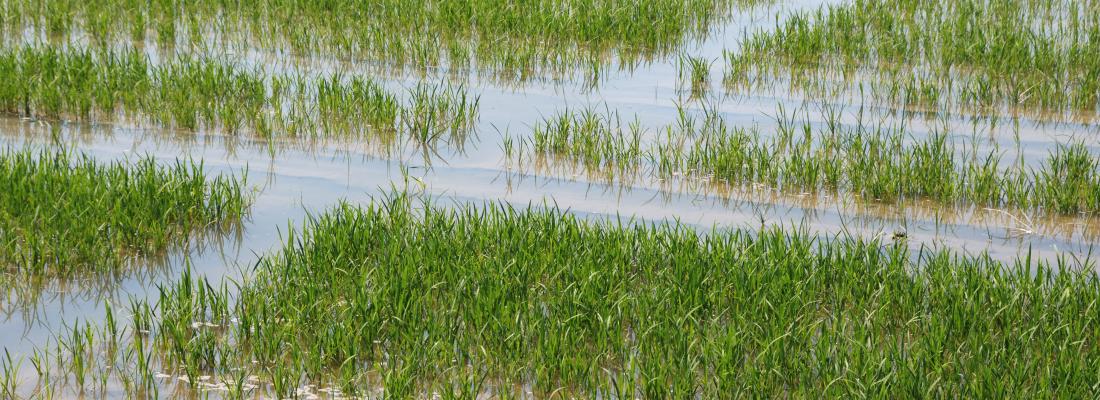Agroecology Reading time 4 min
Crop plants could now reproduce clonally through seeds
Published on 10 January 2019

Methods for breeding better crops focus on two key tasks: 1) producing high performing hybrids by crossing different plant lineages and 2) attempting to preserve and perpetuate the resulting genetic combinations such that the resulting seeds carry the target traits.
To this end, agriculture has been using F1 hybrids since the 1930s. Generated by crossing two pure crop lineages that contain genes of interest, F1 hybrids combine the desirable traits exhibited by each of their parents. They display "hybrid vigour”, benefits that are greater than the sum of the individual agricultural values of the two parental lineages. In crops where individual plants have both male and female organs (e.g., maize, tomato), F1 hybrids are produced by removing the male organs and then carrying out manual pollination. In crops where individual plants are unisexual (e.g., rapeseed, beet), controlled pollination of female plants is performed. The problem is that the offspring of F1 hybrids do not display the same traits as their parents because of the dynamics of meiosis, during which chromosome exchange occurs. Each year, it is therefore necessary to reuse F1 hybrid seeds from the original parental cross to obtain the desired trait combinations.
From meiosis to mitosis
For decades, scientists have searched for a way to preserve the desirable gene combinations represented in high-performing hybrids. In particular, attention has been focused on apomixis, a process used by certain plants (such as dandelions and hawthorns) to asexually reproduce though seeds, which allows them to forgo meiosis and fertilisation. The offspring produced are thus clones of their parents—they are identical to each other. Recently, in Arabidopsis (a model plant species) and in rice, INRA researchers were able to replace meiosis with a mitosis-like process (MiMe) by inactivating three genes involved in meiosis. The result: plants produced gametes (i.e., reproductive cells) containing the same exact chromosomes as their mother plants. However, to engineer apomixis, there is an important additional step. Female gametes must be able to give rise to embryos despite being unfertilised. INRA researchers were able to surmount this hurdle thanks to two separate collaborations: one with Venkatesan Sundaresan's team at University of California Davis and a second with Kejian Wang's team at the China National Rice Research Institute. These two groups independently discovered how to induce embryogenesis without the need for female gametes to be fertilised by male gametes.
A spitting genetic image
To accomplish this feat, they used CRISPR-Cas9 to inactivate the three MiMe-related genes identified by INRA scientists. Sundaresan's team then activated a gene called BABYBOOM 1 in the female gametes. Normally, this gene is only expressed following fertilisation. In contrast, Wang's team inactivated the MATRILINEAL gene (also known as the NOT LIKE DAD gene), which is involved in the fertilisation process. In this way, both teams managed to induce fertilisation-free embryogenesis, which produced rice seeds that gave rise to plants that were identical to the hybrid mother plant. Furthermore, Sundaresan's team showed that these clones also produced clonal offspring: three generations later, identical plants were still being generated. It is therefore possible to preserve hybrid vigour in the offspring of F1 hybrids in rice!
Tremendous possibilities
In both cases, the seed production rates are too low for the processes to be immediately used for commercial seed production. However, the researchers are exploring how these rates can be boosted.
In the longer term, this discovery will revolutionise strategies for improving crops, notably by making it possible to generate clones of F1 hybrids for most species of agricultural interest. The simplicity of the process means that it should be straightforward to test a greater number of genetic combinations and thus generate new types of hybrids, which could lead to a broader diversity of crop varieties. Furthermore, farmers would be able to replant seeds from crops that they had grown themselves, knowing that the resulting plants would reliably display hybrid vigour across generations. This would be a major boon for farmers, and especially for farmers in developing countries, as the annual cost of purchasing seeds represents a significant expense. For everyone to be able to take advantage of these technological advances, the plant breeding and seed production industries will need to change their current economic models.
Seed crops are produced via sexual reproduction: the male gamete, which contains half the chromosomes of its parent cell, fertilises the female gamete, which also contains half the chromosomes of its parent cell. This resulting embryo (and the plant into which it will develop) thus contains chromosomes from both parents. During meiosis in this offspring plant, the chromosomes that it obtained from its parents will recombine. As a result, the male and female gametes produced will contain a mixture of the parental genetic information. This process is repeated each generation. In crops that self-fertilise, such as wheat, male and female gametes display homogeneity after a certain number of generations, leading to pure lineages that remain stable over time. In crops that cross-fertilise, such as maize, offspring always differ from their mother plants.
In contrast, certain seed crops reproduce using apomixis—embryos develop without the need for either meiosis or fertilisation. Offspring resulting from apomixis only contain and pass along genetic information from the mother plant. Certain wild plants such as dandelions and hawthorns clonally reproduce in this way through seeds.
References
A male-expressed rice embryogenic trigger redirected for asexual propagation through seeds. Imtiyaz Khanday, Debra Skinner, Bing Yang, Raphael Mercier & Venkatesan Sundaresan. Nature (2019). DOI: 10.1038/s41586-018-0785-8
Clonal seeds from hybrid rice by simultaneous genome engineering of meiosis and fertilization genes. Chun Wang, Qing Liu, Yi Shen, Yufeng Hua, Junjie Wang, Jianrong Lin, Mingguo Wu, Tingting Sun, Zhukuan Cheng, Raphael Mercier & Kejian Wang. Nature Biotechnology (2019). DOI: 10.1038/s41587-018-0003-0
